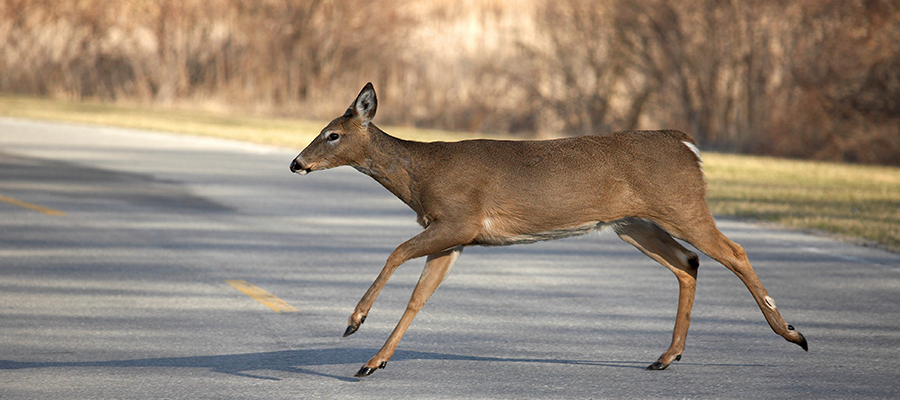In Manitoba, there are approximately 10,000 animal-vehicle collisions, per year. While most of these collisions tend to occur in rural areas, it’s important to be aware and cautious in urban areas as well.
A large number of animal collisions involve deer. Deer are particularly active in the fall with peak danger times from sunset to midnight and just after sunrise.
Avoid or minimize the impact of a collision with an animal by doing the following:
Be alert
Watch for wildlife warning signs, scan the road from side to side and watch for shining eyes. Use high beams when possible and remember - deer travel in groups. If you see one, others are likely nearby.
Slow down
Reducing your speed during peak hours will give you more time and distance to react to wildlife and stop if you have to.
Stay in control
If an animal crosses your path, brake firmly. Avoid swerving, as that may cause a worse collision. Dim your lights so the animal does not freeze and sound the horn with one long blast to try to scare it off the road.

If a collision with a very large animal (such as a moose) is unavoidable, get below the windshield to avoid a catastrophic injury.
If you do hit an animal, move your vehicle safely off the road. Once you’re parked, call the local road authority. It’s very important that you don’t approach the animal, as it could try to escape and hurt you or itself.
When driving near horses, pass slow and wide
A horse rider or carriage driver has the right to travel on the roadway. Be mindful that when approaching horses, sudden moves or noises could frighten them and endanger everyone on the road. Don’t sound your horn and be ready to stop if the rider indicates for you to do so. When you’re ready to pass, slow down and leave plenty of distance between you and the horse. Only resume speed once you are well past the rider.